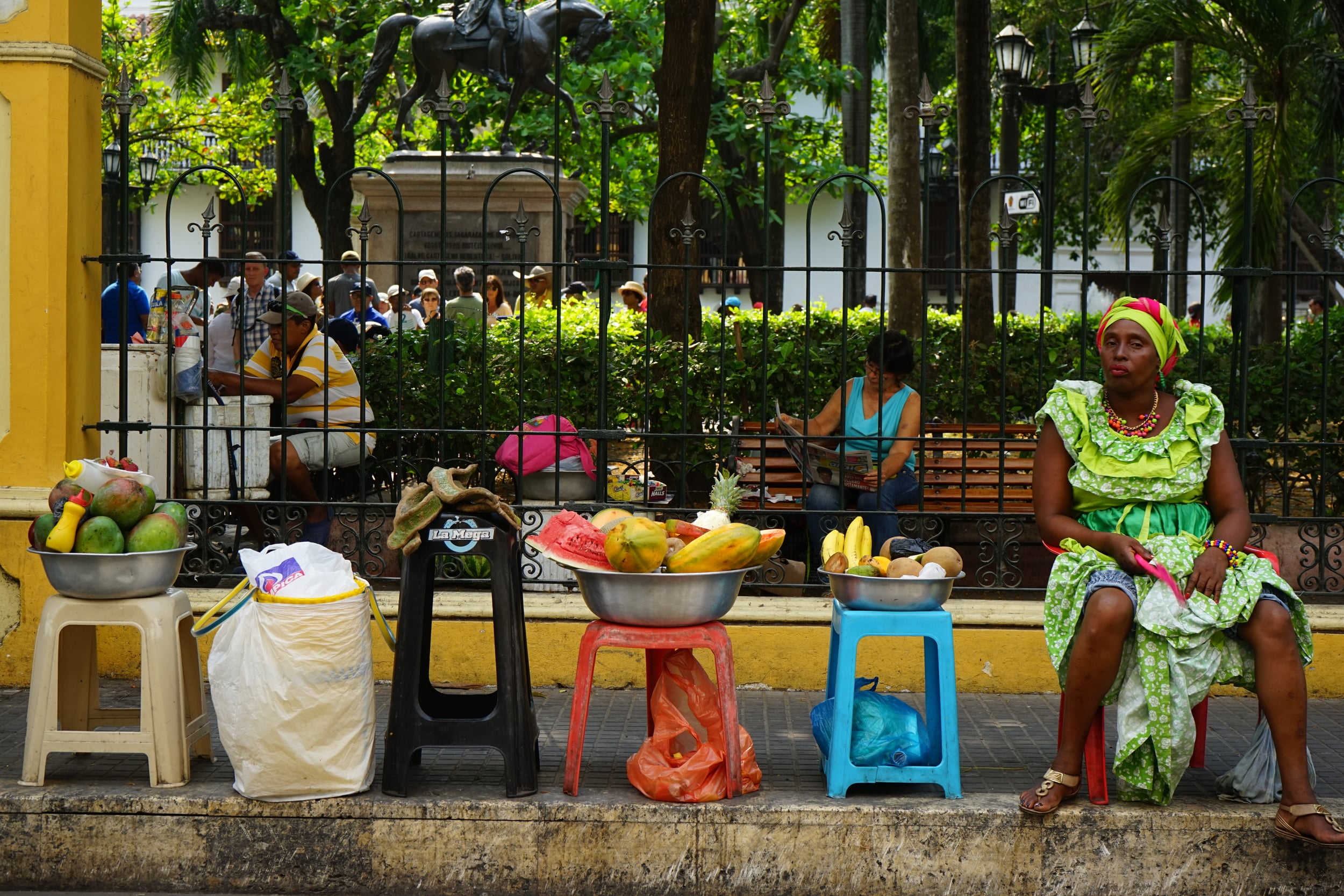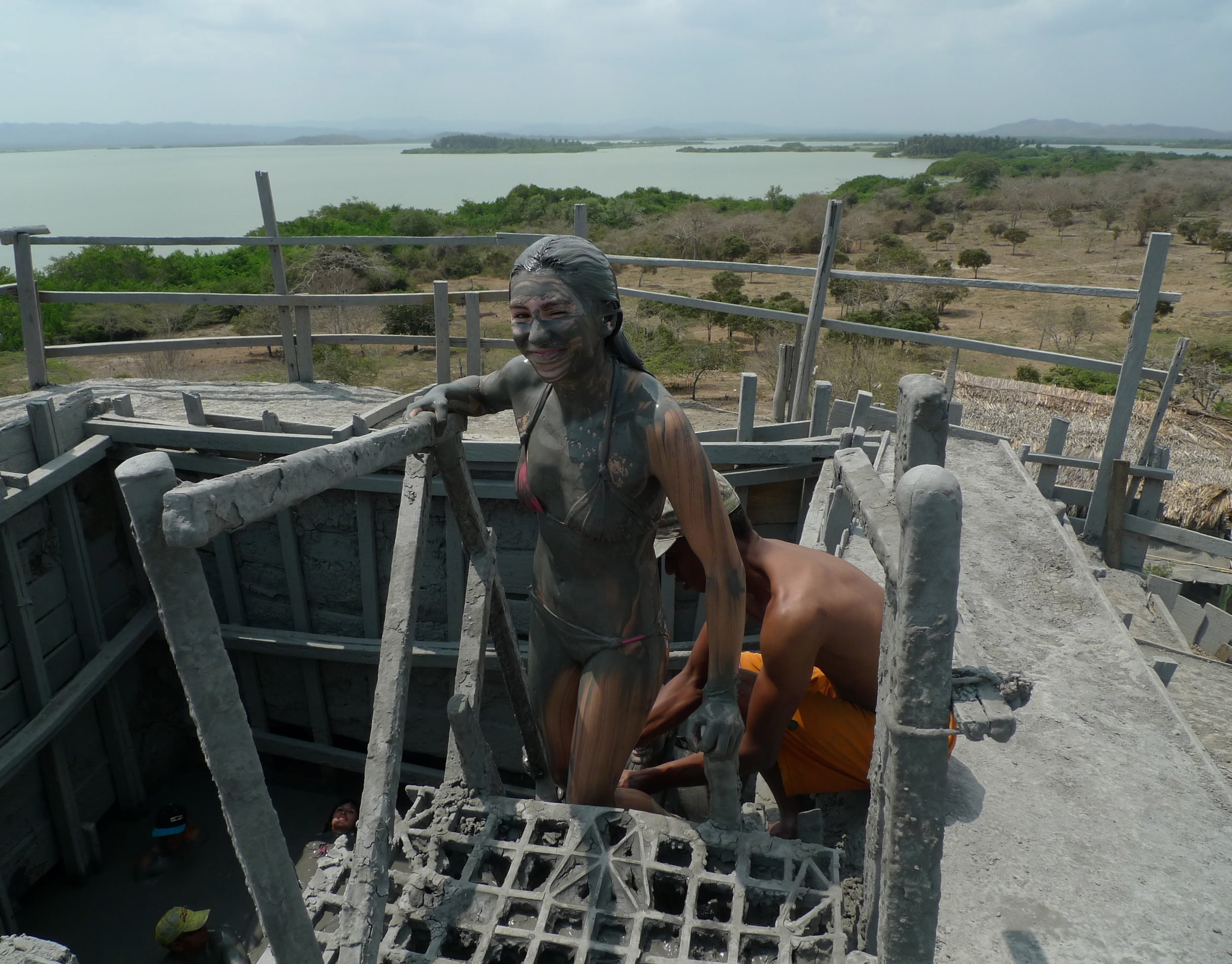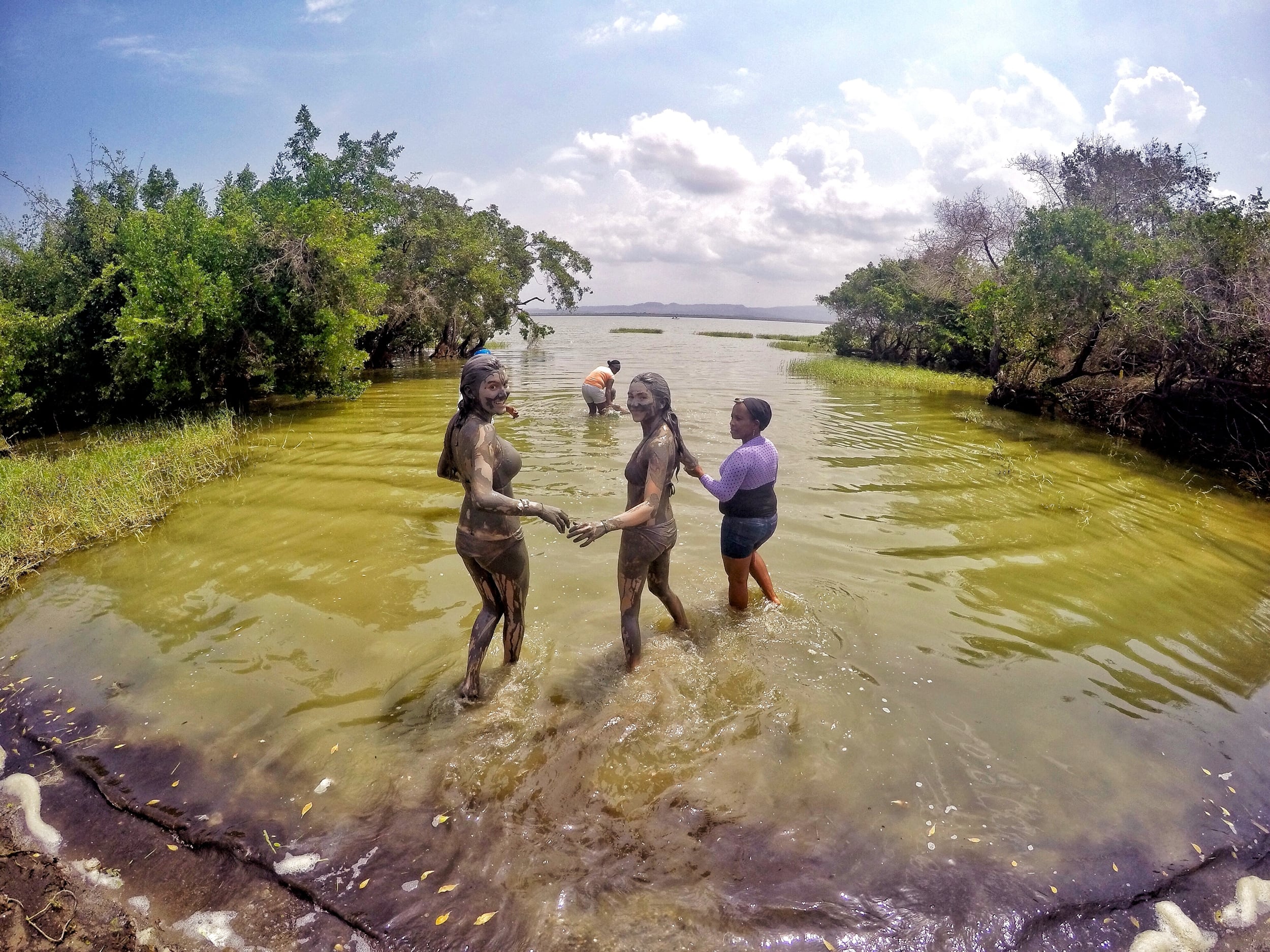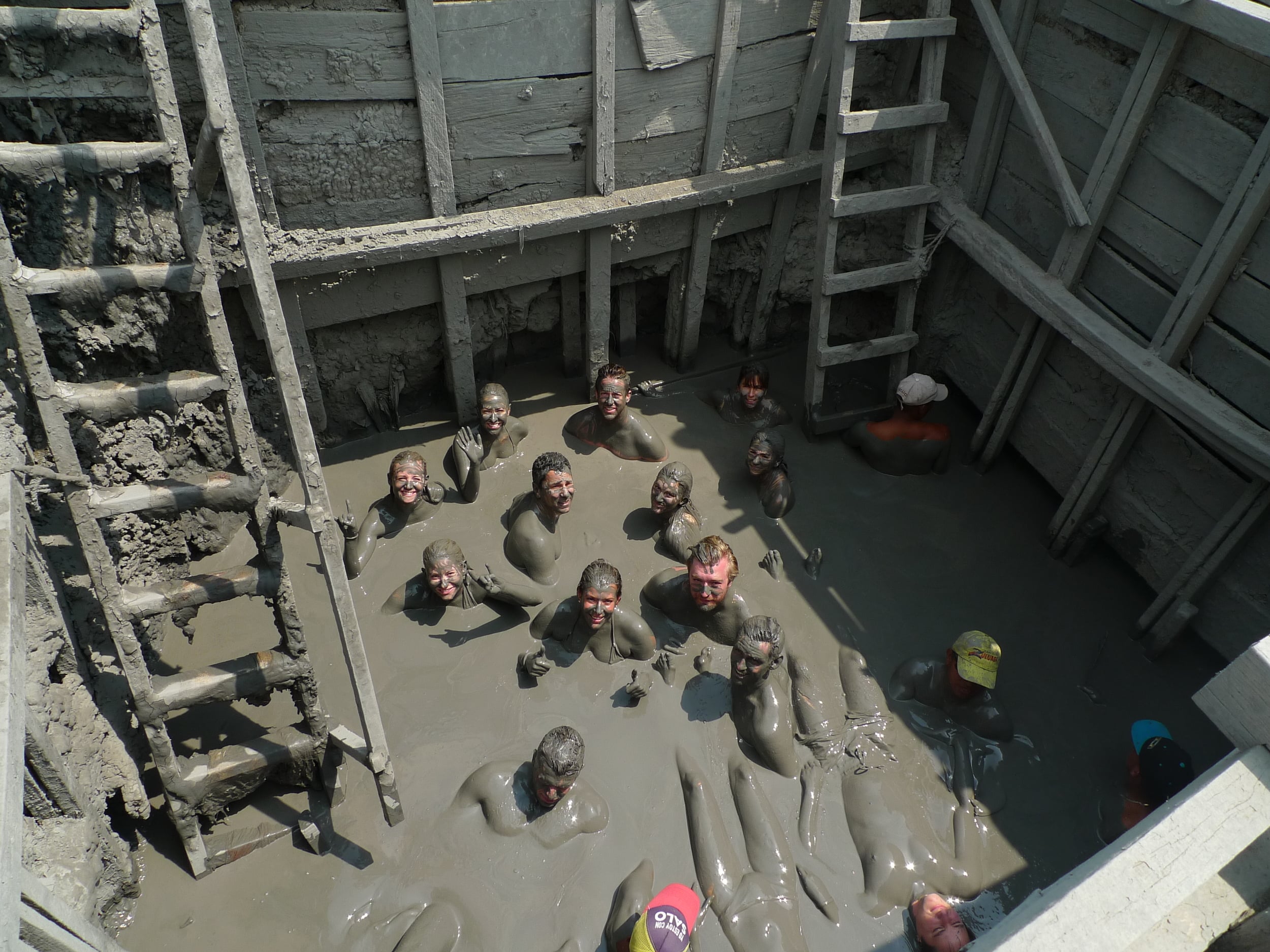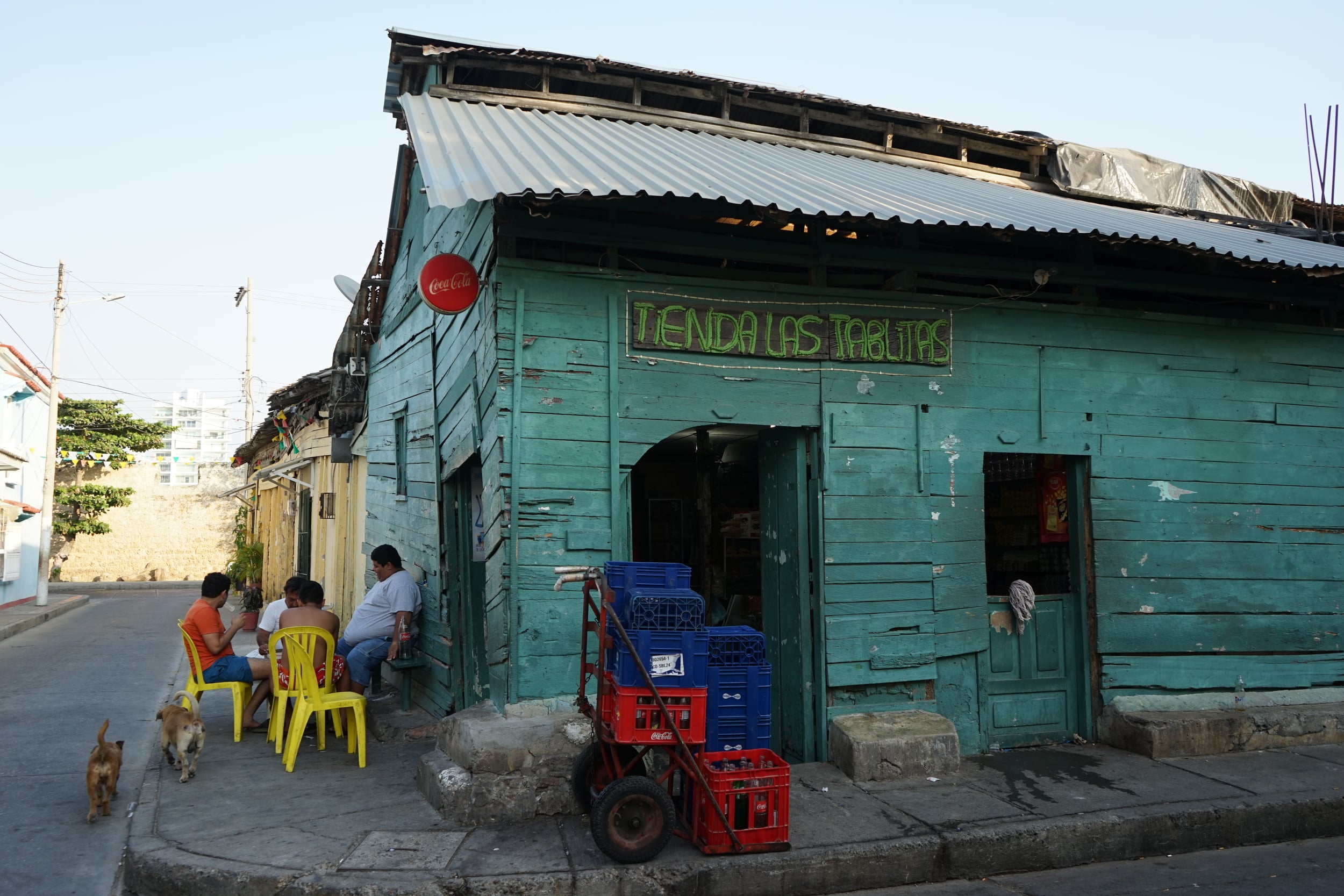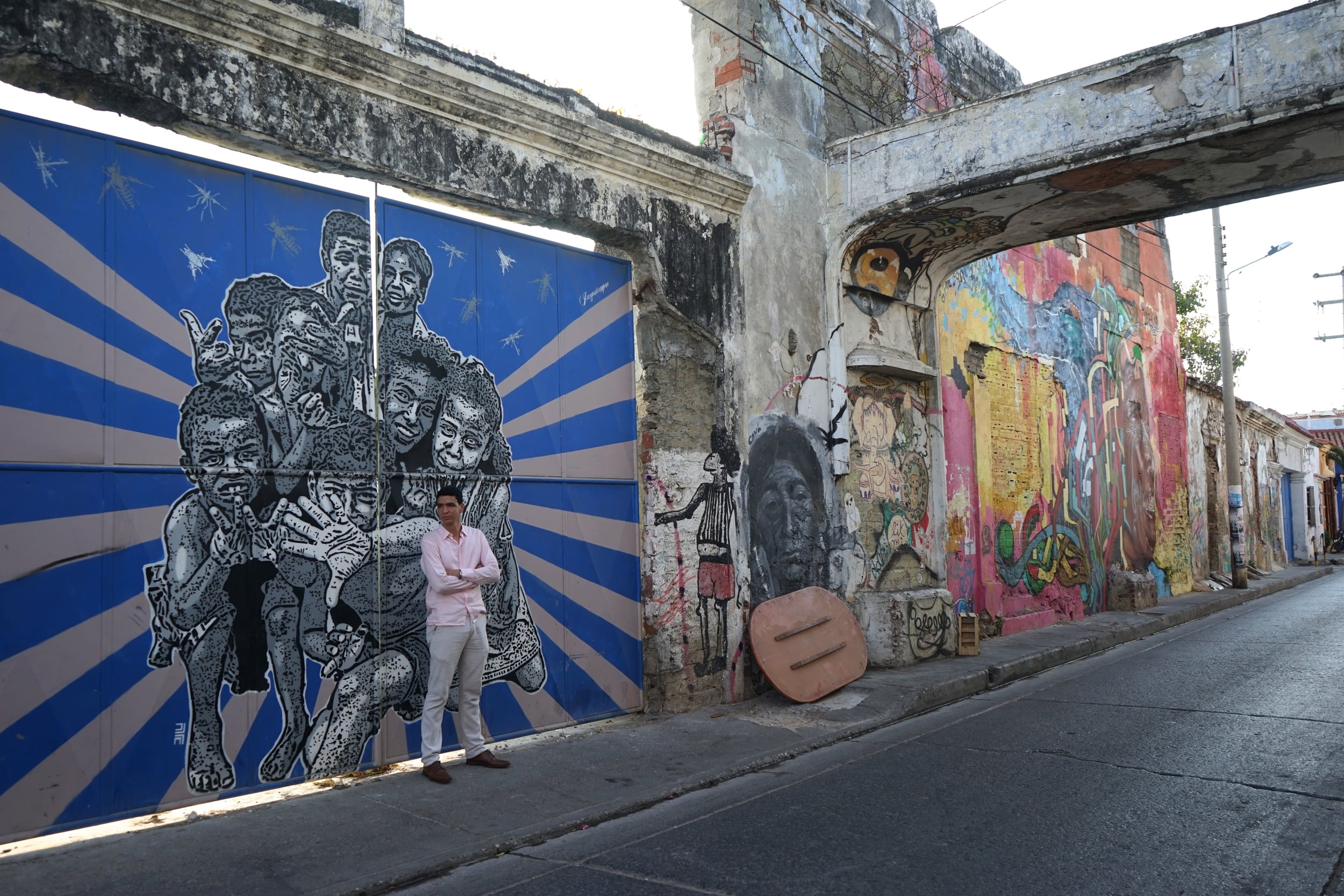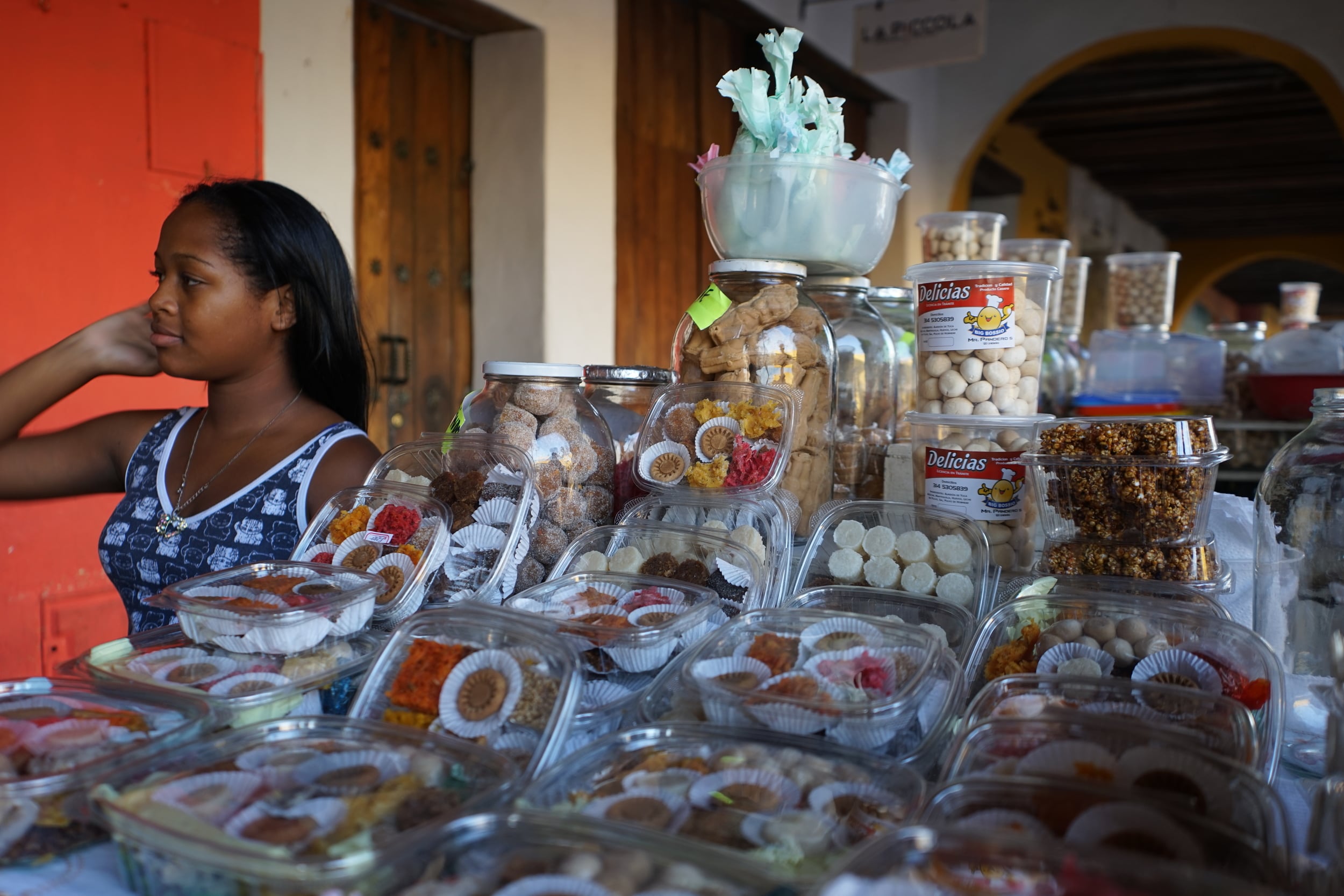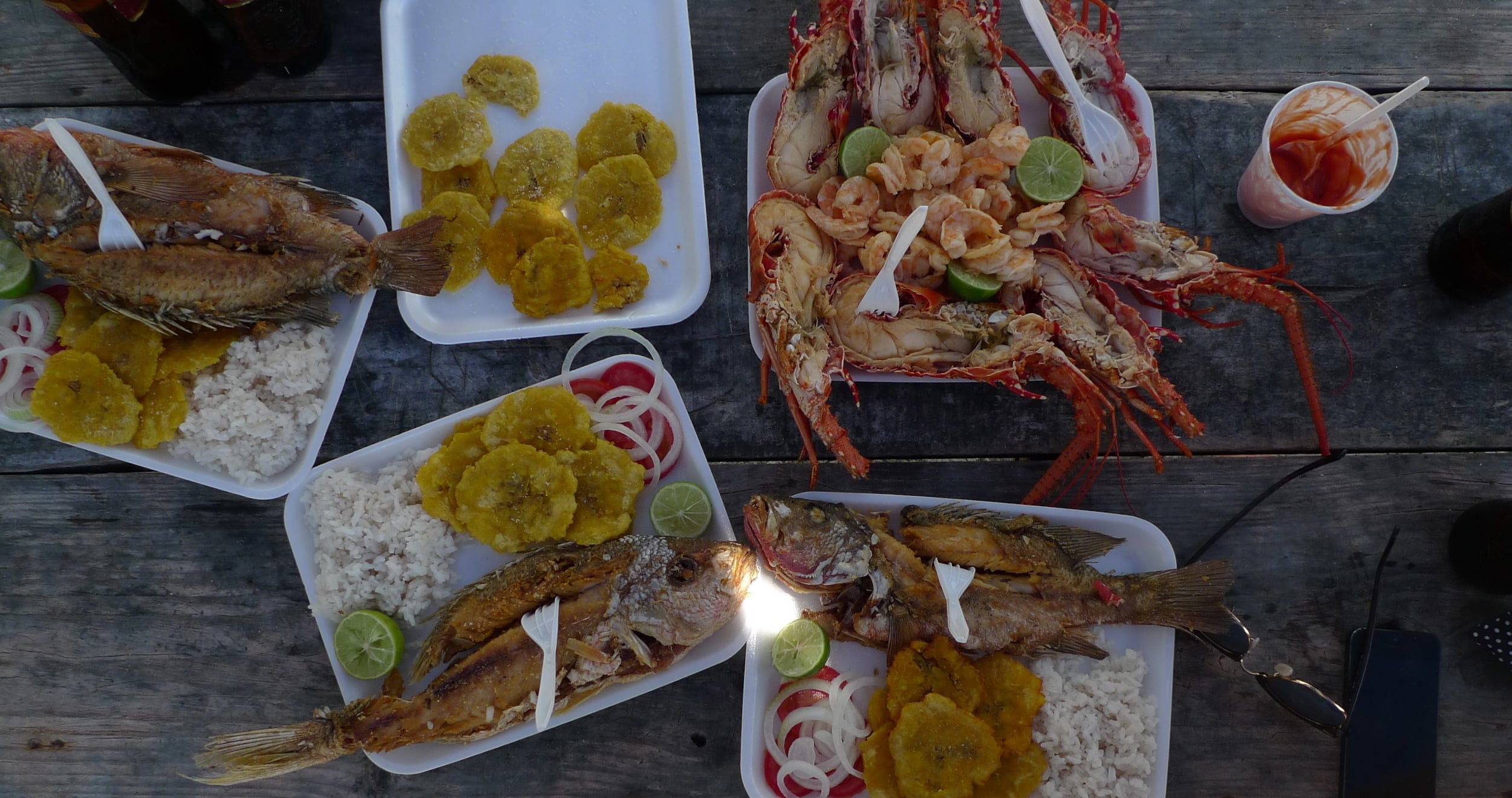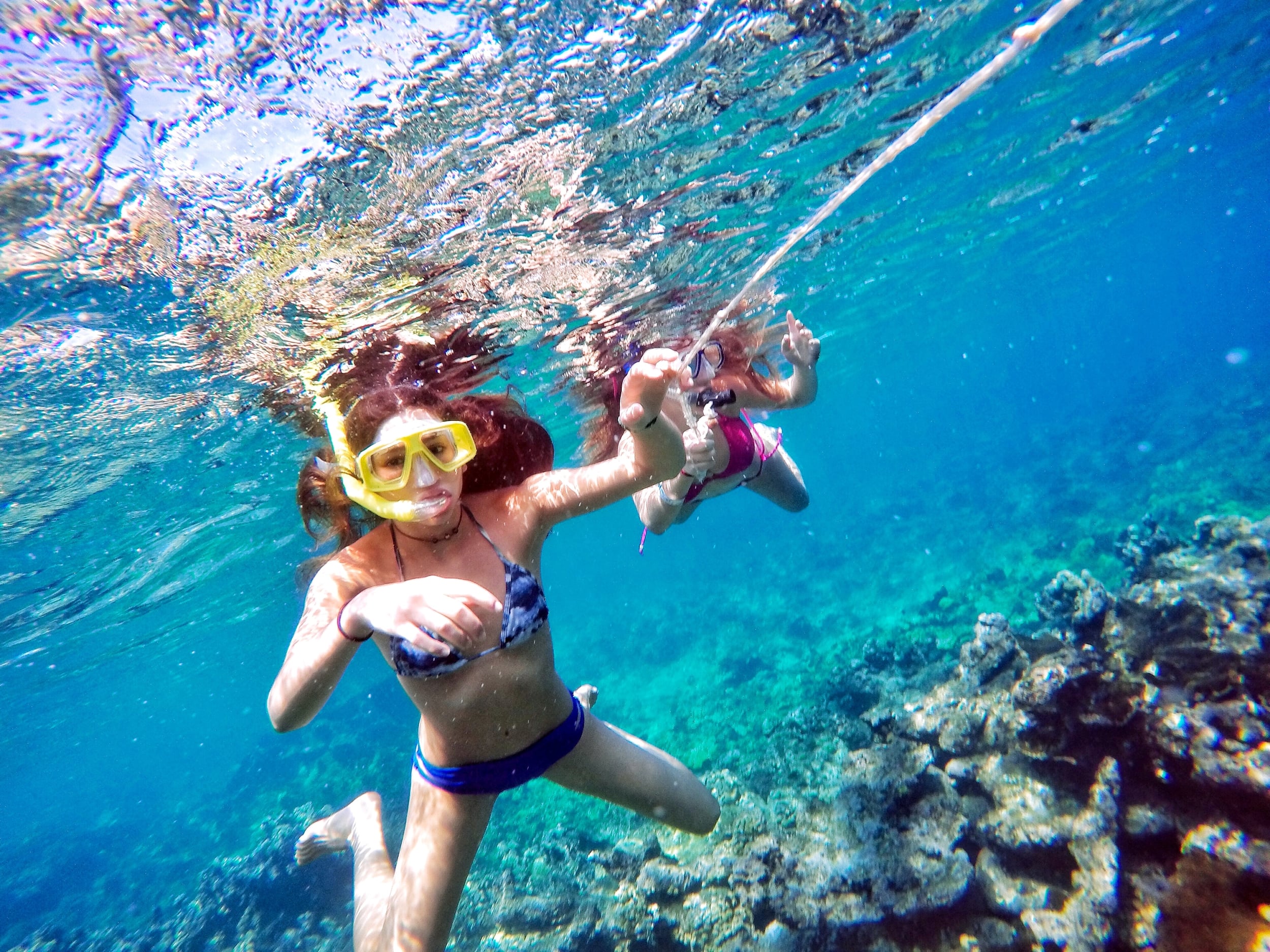Colombia, once one of the most dangerous countries to visit, is having a moment and nowhere more than in the tropical city of Cartagena. A heady mix of South American and Caribbean influences—picture New Orleans meets Cuba with some Spanish flair thrown in. The well-preserved old city, with its cobblestoned streets, horse drawn carriages and bougainvillea draped mansions feels like a step back in time. Yet, there’s plenty of contemporary culture--music, art, shopping, and great restaurants. With direct flights out of NY and Miami, Cartagena is perfect for a long weekend. My husband and I took off with our 19 year old and her friend for a few days in this city by the sea.
Day One
Tripper Tips:
Guides: A great guide can make your visit to Cartagena more insightful and memorable. Ana Maria Gonzalez Forero lives and works in Getsemani where she cofounded and is executive director of the FEM Foundacion, a not for profit working to improve cultural and educational disparities throughout Colombia. Fem offers insider tours in areas of the city you would otherwise miss. Contact Ana at cartagenainsider@gmail.com. She is smart, well spoken and engaging—we loved seeing Getsmani through her eyes.
Our friend Holly just got back and loved touring with Nina Schlieper. Nina runs Alternative Travel Cartagena with her husband, a former chef. They organize dynamic, off the beaten path experiences including: electric bike tours around the city, mountain biking in the countryside with a stop at the mud baths, horseback riding on the beach, cooking classes and market visits and private boat charters. In addition they can customize tours to your specific interests such as: arranging meetings with local poets, architects, anthropologists or art specialists. Contact Nina at on her site or by email info@alternativetravelcartagena.com.
Discover Cartagena with your camera in hand during a photo tour with photojournalist Joaquin Sarmiento. Learn the history of the city while at the same time improving your photography skills. Choose between the Historic District tour which covers Getsemani, La Matuna, San Diego and the Old City Walls or a tour to La Boquilla, a beachside fishing village, located just a few minutes’ drive from downtown Cartagena. Unfortunately, Joaquin was booked the entire time I was in town, plan ahead and get in touch in advance of your visit.
Read or reread, Love in the time of Cholera before you go. Literary giant Gabriel Garcia Marquez’s had a home in Cartagena and many of his works are set in the city.
Stay: If you’re traveling with kids or love lounging by a pool during the midday heat, and Cartagena gets hot—very hot--check in to the Sofitel Legend Santa Clara, with a huge, lovely pool that just lends itself to a few hours of afternoon escape. The hotel, a converted 17th century convent, is beautiful with excellent service and a prime, quiet location within the city’s walls. Request a room in the old wing: it’s more charming and authentic. If you’re looking for something more intimate, small boutique hotels are all the rage in Cartagena. Friends recently stayed, and loved, Casa San Agustin, a trio of colonial buildings that encompasses 30 stylish rooms. Another small gem is Casa Pestagua with 11 rooms or the chic, glamorous, all white Tcherassi Hotel and Spa, tiny with just seven rooms.
Lunch: We hopped an early morning Jetblue flight from NY and arrived in time for lunch. After checking in we headed to colorful, lively La Cevicheria, made famous when Anthony Bourdain visited back in 2009. (Expect to wait or go early!) There’s an extensive menu, but ceviche is the star here. Try one with coconut served with plantain chips for scooping. This is your first sign that coconut is a staple in Cartagena appearing on most menus in the form of coconut rice. A bonus of staying at the Santa Clara is Cevicheria is right out the back door.
Walk the Wall: Explore the colonial walled city: an 11 kilometer preserved wall still encompasses the old town, used as a fortress throughout history. (The old city was named a Unesco World Heritage Site in 1984.) Wandering and meandering are essential to soak up all the color and flavor. You can start at Plaza de Bolivar, the park dedicated to Simon Bolivar who liberated Cartagena. Low key during the day, it becomes a lively party during the early evening when local dancers gather to partake in customary folk dances—so fun! If seeing guillotines and torture racks are not your thing the Inquisition Palace is still worth a visit as an impressive example of Spanish colonial architecture with a beautiful interior patio. Also in a charming colonial house on the Plaza, the Zenu Gold Museum has an interesting collection of pre-Hispanic gold and pottery.
Sweet Tooth: Nearby make a stop at Swikar, to watch the men putting on a show rolling and molding their unique, colorful caramels. I doubt you’ll leave without a tin to bring home. Stop under the arches of the Portal de los Dulces where street vendors line the walkways selling delicious, distinctive local candies.
Refresh: You must try a gourmet ice pop at La Paletteria. Skip the chocolate and try one of the more unusual flavors using local fruits such as guanabana, lulo or maracuya. A friend just back told me about Gelateria Tramonti, which somehow escaped us. She said, “Our guide took us to Tramonti and we got to try every flavor, there are some unusual ones like lemon cake and even viagra! It was incredible. The owners are brothers from Italy. We went back there every day! “
Kick Back: It feels as if most of Cartagena gathers every night for a cocktail at Café del Mar, perched strategically on the wall overlooking the sea. Grab a seat on the spacious patio, sip a Mojito and watch the sunset. The party and music continues long after the sun goes down.
Play Tourist: My friend who shuns “touristy” attractions told me we must go on a horse drawn carriage ride. Its genuinely fun and offers a different perspective on the city.
Dinner: The waiters are dressed in crisp white serving traditional Cuban dishes at La Vitrolo, the most well-known and popular restaurant in Cartagena. It’s sceney, with a great atmosphere and live music, and yes all the tourists go, but so do the locals. You must book well in advance!
Day Two:
Out of the Ordinary: Sure it’s touristy, but a visit to Volcan del Totumo, approximately a 40 minute drive from Cartagena, is a unique and utterly, bizarre experience that’s surprisingly really fun. Go early before it gets too crowded and the day gets too hot. After changing into your bathing suit you’ll climb the stairs up a small hill and descend into a big, natural mud pool where men will massage the mud, known for its beneficial health benefits, all over you. It is a surreal experience and a different sensation that you will share with each new arrival’s oohs and ahhs as they descend into the volcanic pit. Afterwards, walk down to the river where local women wash the mud off you. This is not for the shy! If you're traveling with kids this is a must do.
Lunch: On the way back you can stop at one of the very basic, local shacks on the beach in La Boquilla, a local fisherman village right outside Cartagena for some fried fish and plantains. Or head back to town and dine at Juan del Mar specializing in local seafood. Order the paella, fresh fish and a pitcher of sangria. We all loved our meal - this is a good choice for dinner as well.
Historic Views: There is an ever expanding city beyond the wall; see a great view of it from high up at the 400-year-old Convento de la Popa Monastery. Afterwards spend some time in the tunnels at Castillo de San Felipe de Barajas, the fortress built by the Spaniards on top of San Lazaro hill.
Street Shopping: You’ll be tempted to buy more than one mochila, the colorful woven bags, sold on every street corner and in many shops. Prices vary slightly but most can be bought for $25.00. It was a surprise to see the same bags sold in NY on our return for over $200.00. Plan to leave some room in your luggage when packing, these make great presents. Over in Plaza Santo Doming the girls went crazy buying pretty beaded necklaces and bracelets—all for just a few dollars.
Shops: St. Dom is a must visit, a beautiful concept store that’s a mix of fashion, art and design. You’ll find high-end Colombian designers mixed amongst an eclectic mix of books, pillows and other lifestyle accessories. Casa Chiqui is an interior design shop that has eclectic wares from the owner’s travels all over the world. Silvia Tcherassi is Colombia’s best-known designer; her shop near the western side of the wall is worth a peek. A counterpart to the New York gallery, NH Galeria is the place to see some of Colombia’s best contemporary artists.
Cocktails: The bar at the Sofitel, El Coro, plays great music and makes fresh mojito’s; not a bad way to start the evening.
Dinner: We loved the tiger murals on the walls and overall decor at hip Maria, a stylish spot from chef Alejandro Ramirez, and preferred the lighter tapas style menu to a previous meal at it’s next-door grown up sibling Don Juan. Or sit in the outside garden at Cuzco Cocina for delicious Peruvian food, the atmosphere is lively and there’s often live music. Want a light dinner? Teeny, tiny Boliche serves inventive, elevated, sophisticated ceviches—don’t miss this if you’re a ceviche fan.
Day Three
To Market: Bazurto Market is not for everyone—it's smelly and dirty and chaotic. (One friend described it as “pungent”.) And with bloody animal parts at the butcher stalls it’s definitely not for the feint of heart. It’s perfect for adventurous travelers and foodies. Don’t let this scare you; the market is a highlight for many. It’s best to go with a guide or on a group tour such as this offering from Cartagena Connections.
Must Do: We had the good fortune to tour Cartagena with Ana Maria Gonzalez exploring the neighborhood of Getsmani, just outside the old town walls. Cartagena is a multicultural city; a mixing pot of different cultures and Ana gave us a taste, a glimpse of the real Cartagena. Just a few years ago Getsmani was borderline sketchy and unsafe—today it’s emerging as a cultural center complete with an art scene, restaurants and cool bars. (A soon to open Viceroy Hotel and rumors of a Four Seasons will add to the gentrification, for better or worse.) Plaza de Trinidad is at the heart of Getsmani, filled with backpackers, young teens playing ball, musicians--a real mix of locals and tourists. Walk down the Calle se la Sierpe where amazing street art lines both sides of the street. Graffiti art has been a real catalyst in revitalizing the community: reminiscent of Miami’s Wynwood Walls and the street art movement in Buenos Aires. We ended with a stop at Ciudad Movil, a cultural center that hosts art exhibitions, dance performances, parties and has a small restaurant Fedora. We participated in a small cooking class making patacones, fried plantains, while the resident hip-hop dance company practiced in the next room.
Drink: Demente on Trinidad Square is an old house furnished with rocking chairs, where you might have flashbacks to Williamsburg ten years ago. Or sit on the rooftop terrace sipping one of the signature fruit cocktails at Malagana Café and Bar.
Dinner: You could head back to the old city, or instead eat at La Casa de Socorro for more local, typical Cartagenera cuisine.
Late Night: Indulge in some salsa and rum at old school Café Havana, where you’ll swear you were transported to Cuba. Go early to get a seat at the large horseshoe bar as a line forms later in the night. The place starts rocking with a salsa band around 11 pm and the dancing continues till the early hours. Café Havana opened in Getsemani back in 2006, and quickly became Cartagena’s hottest bar—a must visit!
Day Excursion:
Beach Time: The Rosario Islands, Colombia’s national water park, is an archipelago of small islands one hour by boat from Cartagena. Unlike Cartagena’s beaches, which are less than desirable, here you’ll find stretches of white, sandy beaches and clear turquoise waters ideal for snorkeling or diving. Larger tour boats leave from the marina, but it is well worth the splurge to hire a private boat. We cruised the islands on our own schedule; stopping for a swim and snorkel before heading to one of the small islands for a lobster and fried fish lunch on picnic tables. All boats head back in the early afternoon as the waves get very rough later in the day. Christina Kuntz (christinakuntz87@gmail.com) , a Denver native, who along with her husband—he’s from Cartagena--know almost everything there is to know about activities in the Islas de Rosario. We highly recommend you contact them to arrange your day out on the water. In addition, Christina is the founder of Domino Volunteers that connects volunteers to fantastic volunteer opportunities.


